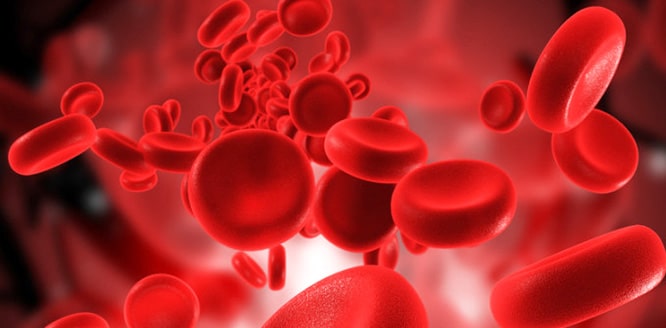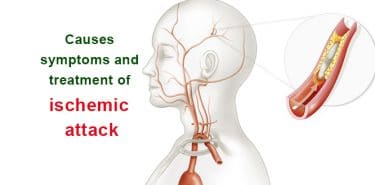Complete blood count (hemogram) is an easy, practical and reliable test to diagnose many diseases such as infection, leukemia (blood cancer) and anemia. The content of blood cells and their properties such as size, color, distribution are examined. Since the veins are close to the surface, some blood is drawn from these vessels and tested by means of automatic counting with special devices. Hemogram testing, which contains many parameters such as red blood cell count, white blood cell count, platelets count, is a very important test and is frequently used in today’s medicine.
Table of Contents
What is complete blood count (CBC)?
Hemogram is the process of counting the different cells in the content of a blood sample drawn from the vein by special devices. The hemogram test is called CBC, Complete Blood Count. Blood required for hemogram testing is drawn from the veins, because veins are close to the surface, which makes blood drawing easier. Blood samples are usually taken from the vessels from the arms in adults, from the back of the hands in the children and from the heels in the newborn.
What are the components of CBC?
The hemogram test measures the values of many blood cells such as HGB (hemoglobin), WBC (white blood cell count), PLT (platelets), HTC (hematocrit), MCH, RBC, RDW, lymphocyte, monocyte. Some of these parameters are obtained by direct measurements, while others are obtained directly using the measurement results in various formulas.
What is WBC?
It is the counting process of white blood cells (leukocytes). These cells are responsible for the body’s struggle against infections. There are different types of white blood cells such as lymphocytes, neutrophils, basophils, eosinophils, monocytes. The hemogram shows the individual values and the ratios of all of these cells.
What is HBG?
HGB is the abbreviation of hemoglobin. Hemoglobin is a structure in red blood cells (erythrocytes) that can bind to oxygen and carbon dioxide and gives red color to erythrocytes. It is involved in transporting oxygen to the tissues of the red blood cells. Its level is directly proportional to the level of red blood cells. Therefore, it gives valuable information about anemia.
What is PLT?
PLT is the abbreviation of platelet (blood flakes). The role of platelets in the body is to stop bleeding. Platelet value is important in cases of bleeding or clotting disorder.
What is MCH?
MCH (Mean Corpuscular Hemoglobin) is a test indicating the average value of erythrocyte hemoglobin. Hemoglobin gives the red color to erythrocytes. In hemoglobin deficiency, red blood cells may be faded. This is measured by MCH value. In some types of anemia, erythrocyte pallor is important in terms of differential diagnosis.
What is RBC?
RBC (Red Blood Cell) is the direct measurement of number of red blood cells in blood.
What diseases can CBC detect?
- Differential diagnosis of anemia: iron deficiency anemia, megaloblastic anemia, macrocytic anemia, aplastic anemia
- Bleeding and coagulation disorders: Idiopathic thrombocytopenic purpura, thrombocytopenia, thrombocytosis
- Infectious diseases: systemic and local (regional) infections
- Leukemia
- Lymphoma
- Polycythemia vera
- Lymphadenopathy (growth in lymph nodes)
- Splenomegaly (spleen growth)
- Types of Thalassemia
- Allergy
- Monitoring of liver diseases such as hepatitis
Why is complete blood count done?
- To investigate if there is a tendency of bleeding by looking at the level of platelet prior to invasive procedures such as biopsy, surgery,
- As a complement to the medical history of the patient and his/her physical examination. It is a simple, fast and reliable test in the differential diagnosis of most diseases.
- To monitor the changes in the blood cell values of the patients receiving chemotherapy,
- To monitor the severity of bleeding after a traffic accident, surgery or gastric bleeding,
- For an assessment after transplantation of blood or blood components,
- To diagnose patients with problems such as fatigue, pallor, fatigue, bleeding tendency, hemorrhagic bleeding, bone pain, swelling of lymph nodes, frequent infectious disease.
What are the benefits of CBC?
In most diseases that occur in the body, at least one value that can usually be measured in the hemogram test increases or decreases. The changes that are expected to occur in the blood cells in these diseases are known by the doctor and help in the diagnosis of the disease. In some diseases, the values that can be measured in the hemogram test don’t change, which helps to diagnose or to eliminate the diseases in the differential diagnosis.
How is a CBC done?
- A blood vessel that does not have any other fluid in it is selected because it may affect the results.
- The area where the blood sample is to be taken is cleaned with disinfectant.
- The tourniquet is connected to the top of the blood vessel. It is not connected very tightly and is not attached for a long time.
- A certain amount of blood is taken.
- Blood samples are placed in tubes containing EDTA without waiting.
- EDTA is a substance that prevents blood clotting. However, in order to prevent clot formation in the tube, the blood is gently mixed for 6-7 times as soon as the blood is taken into the tube. It should definitely not be agitated.
- The blood sample is sent to the laboratory. Measurement is made by means of special devices.
How is the CBC reported?
The blood sample is examined on the device. As a result of this examination, a report is prepared. The paper contains the reference range values of the blood cells and the patient’s result values. Different marks or colors are used if the result values are high or low relative to the reference range.
A report does not give a diagnosis or pre-diagnosis of the disease. The results paper is used by the physician to make a diagnosis by evaluating the patient’s complaints and physical examinations, and all the other measurements.
How to read CBC results?
- Low HGB (hemoglobin) value: It is observed in such situations as anemia, blood loss, pregnancy-related changes, leukemia, lymphoma, blood destruction (hemolysis).
- High HGB (hemoglobin) value: Polycythemia vera, smoking, living in high places, excessive fluid loss (due to vomiting, diarrhea, burns)
- High WBC (white blood cells) value: Types of leukemia, infections
The number of lymphocytes increases in virus-induced infections, the number of neutrophils increases in bacterial infections, and the number of eosinophils increases in parasitic infections and allergy.
- High PLT (platelets) value: Myeloproliterative diseases, in the early stages of infections, in some cancers, iron deficiency anemia, after the removal of the spleen, in the postoperative period
- Low PLT (platelets) value: Idiopathic thrombocytopenic purpura, disseminated intravascular coagulation (depletion of platelets after excessive use), diseases involving the spleen
In addition, some drugs and bone marrow cancer can change the above parameters.
What affects CBC results?
- Very tight connection of the tourniquet when taking blood
- Shaking the tube after the blood is put into the tube
- Placing blood into the wrong tube
- Taking inadequate amount of samples
- Overfilling the tube
- Waiting too long before the blood sample is examined
- Poor biochemical values of the patient (hyperglycemia, hyperlipidemia)
- Any fluid leaked from the blood taken from the vein
- Any malfunction in the device
If the results are not consistent with the patient’s problems and physical examination, the test is repeated. Peripheral smear is performed where blood samples are examined microscopically and hemogram test is confirmed.
CBC for children
Hemogram test is a test used frequently in diseases such as infection, anemia, bleeding disorders in children. It is also used in the diagnosis and follow-up of cancers such as the leukemia, which is very common in childhood. In addition, if the child does not have any problems, a hemogram test can be performed for child development follow-up.
The most important difference in children compared to adults is that the reference range is different from the normal values of the parameters evaluated on the hemogram. So the results are assessed according to the age of children.
Normal values of complete blood count
What are normal ranges of CBC test?
The reference range, normal values are specified in each hemogram test. The high or low measurement result is evaluated according to the reference values of the laboratory in which the test is performed. At the same time, age and gender are taken into account when evaluating reference ranges.
- Hgb: 11.5-18 g/dl
- Plt:150.000-400.000
- Wbc: 4.000- 10.000
- Neutrophils: 1.800-7.700
- Number of lymphocytes: 1.000-4.800
- Number of eosinophils: 0-400




